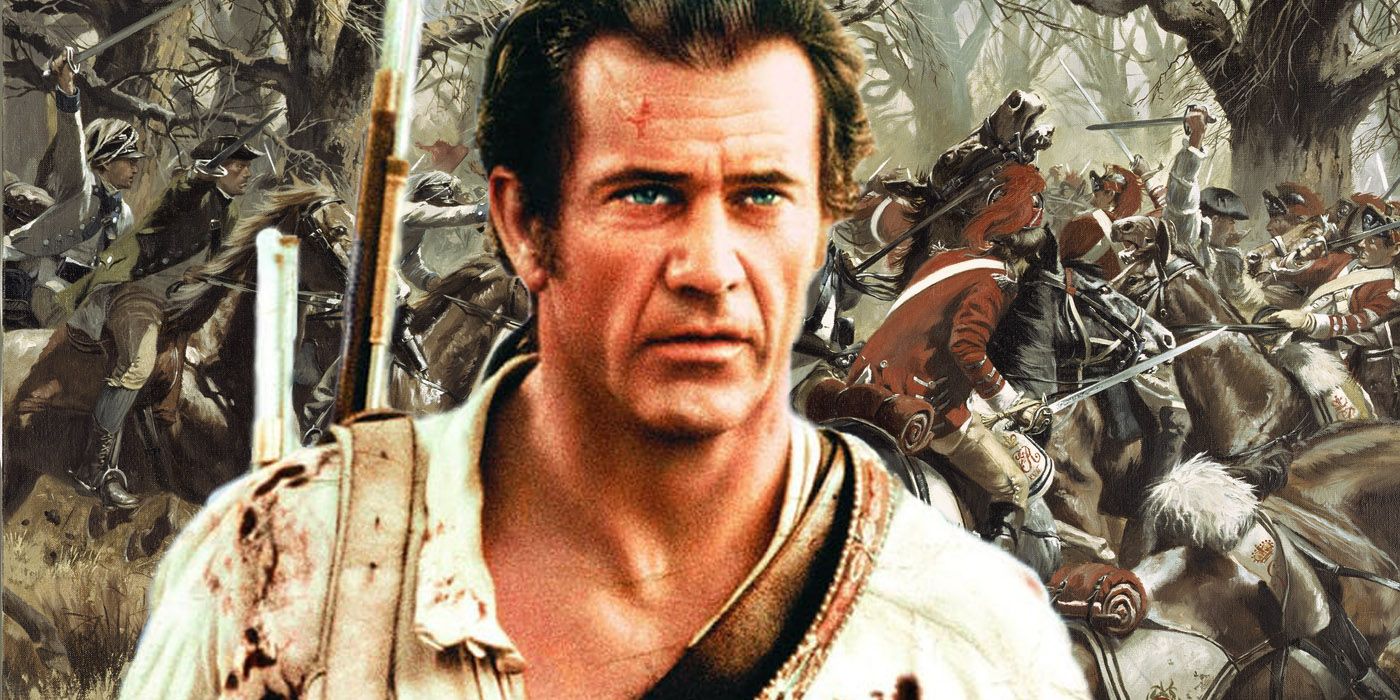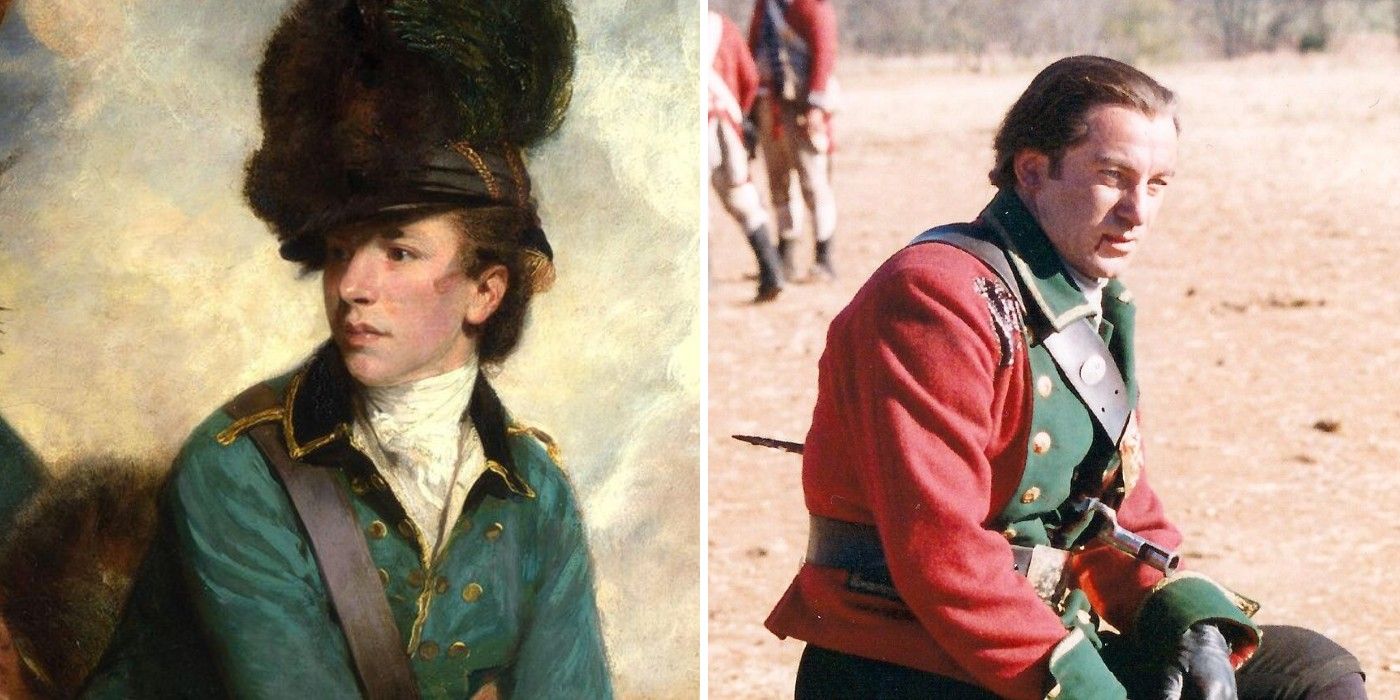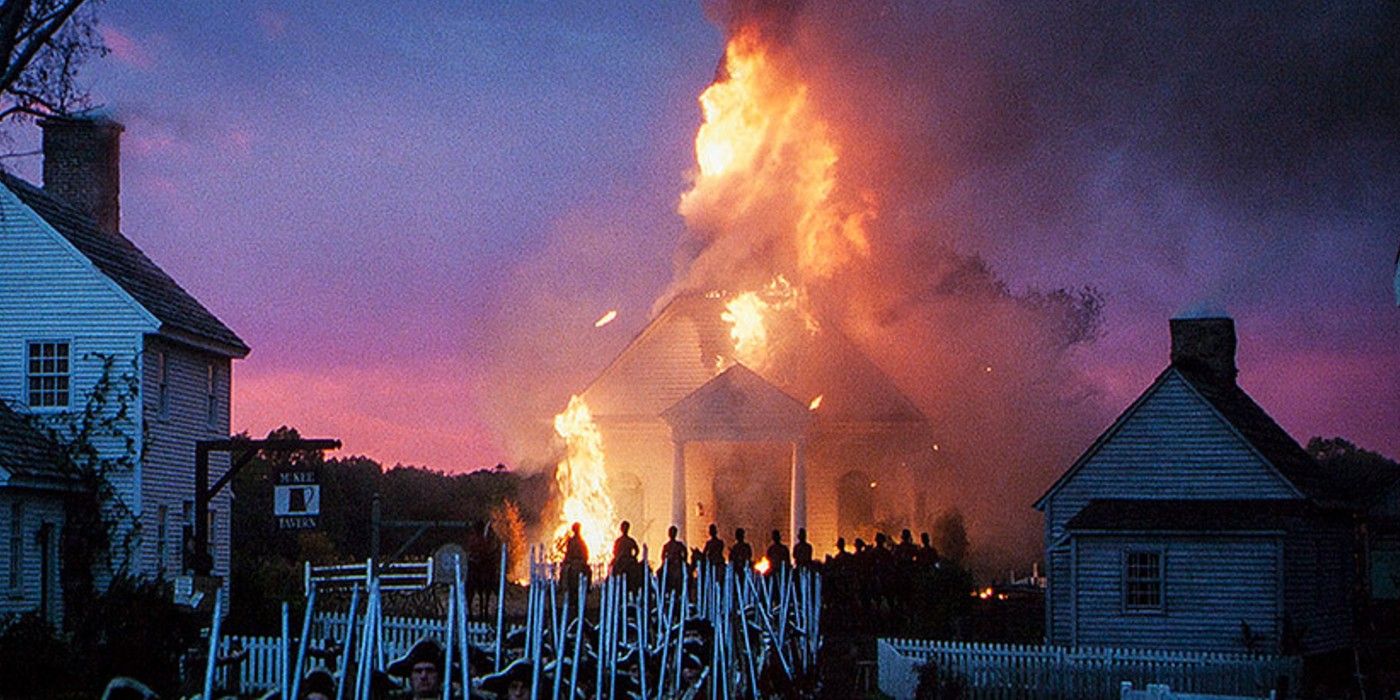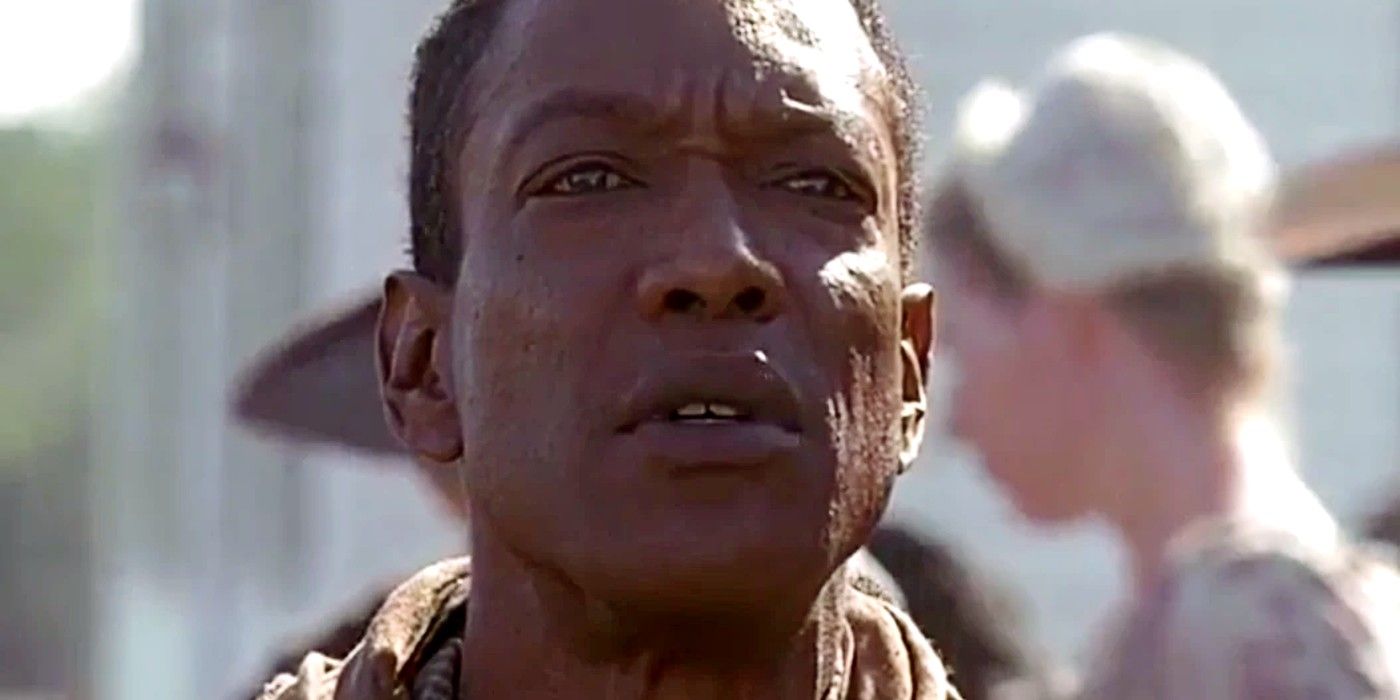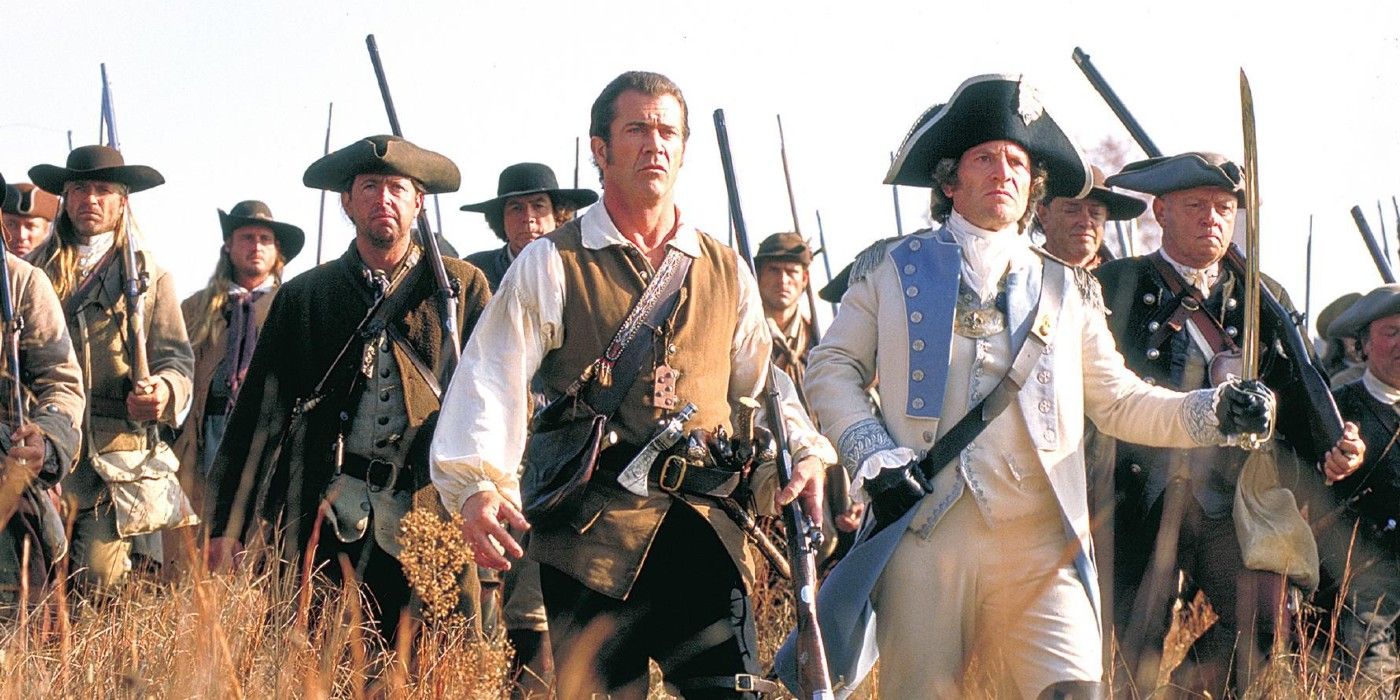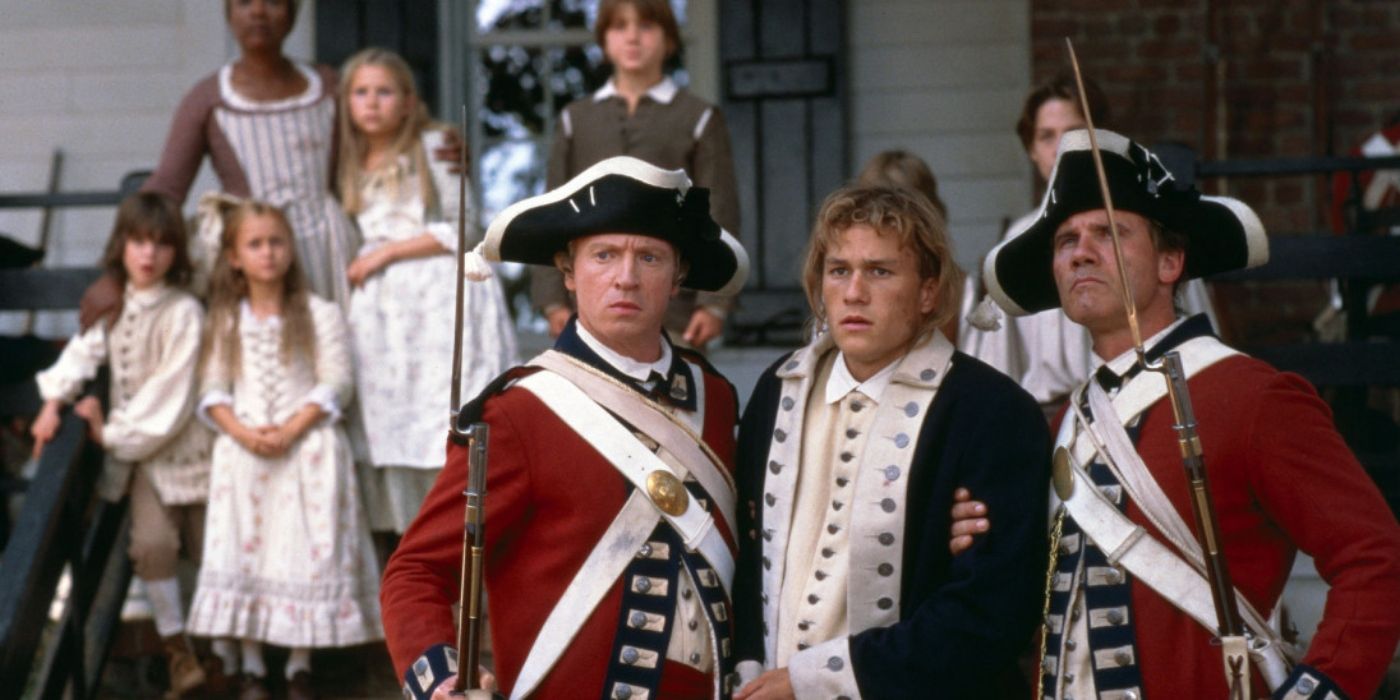Summary
- The Patriot's true story is heavily fictionalized, with characters like Benjamin Martin being inspired by multiple historical figures.
- The depiction of the British and slavery in The Patriot has been criticized for sugarcoating atrocities and historical realities.
- While the battle scenes are more historically accurate, the overall narrative of The Patriot has faced backlash for misleading interpretations.
Though it recreates the historical American Revolution, The Patriot's true story is much different from what was seen on screen. In The Patriot, Benjamin Martin (Mel Gibson) is a veteran of the French and Indian War who now lives as a widower with his many children. Martin is initially reluctant to fight against the British, but when the villainous redcoat leader, Colonel William Tavington, murders one of his sons, Martin recruits a militia and leads them in a highly effective guerrilla campaign against the British forces in South Carolina.
The Patriot has been widely criticized for reducing the American Revolutionary War to one man's mission of revenge. However, there are aspects of The Patriot that are based on a true story, from several of the main characters to the battle tactics used. Despite these inspirations, there are even more aspects of the movie that have been criticized for being complete and offensive fabrications as well as moments that ignore key aspects of history. Overall, The Patriot's true story as compared to the movie creates a complicated legacy.
Harrison Ford was initially approached about playing Benjamin Martin in The Patriot.
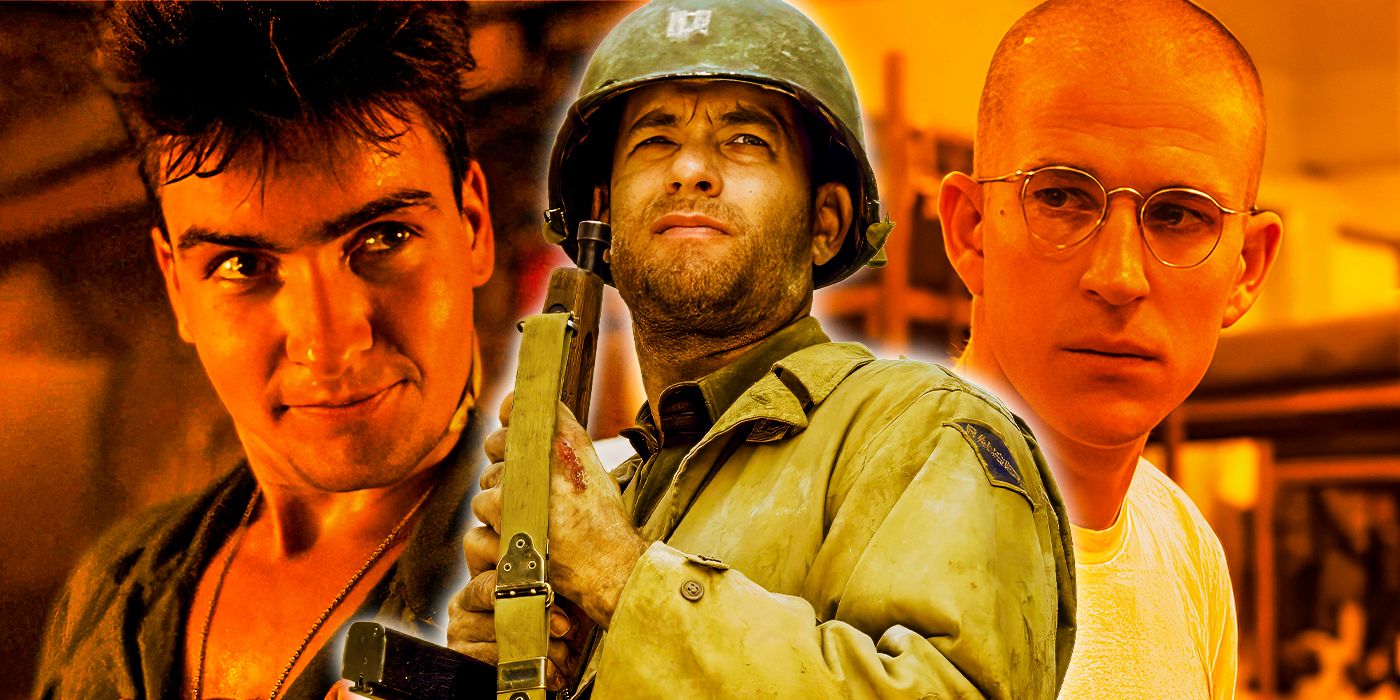
10 War Movies Military Experts Praised For Accuracy & Realism
While most war movies are criticized for their inaccuracy, there are many that got various details right, earning the praise of military experts.Benjamin Martin Is Mainly Based on Francis "Swamp Fox" Marion
Several Historical Figures Inspired The Character
Mel Gibson's The Patriot hero makes for a prime example of the movie being inspired by history but making a lot of fictional leads in the story. There was no Patriot militia leader called Benjamin Martin who fought in the Revolutionary War, and the details of Benjamin's life and family are fictionalized. However, in the DVD featurette "True Patriots," screenwriter Robert Rodat explains that Benjamin is based on several different real historical figures: Francis "Swamp Fox" Marion, Thomas Sumter, Nathanael Greene, Andrew Pickens and Daniel Morgan.
Creating a fictional character rather than using any one historical figure gives The Patriot an excuse to leave out details...
Francis Marion appears to have been the primary influence, since many details of Benjamin's character - including his role in the French and Indian War, his use of guerrilla warfare tactics, his gathering and leadership of militiamen, and his use of ambushes to gather intelligence - are lifted straight from Marion's biography. Creating a fictional character rather than using any one historical figure gives The Patriot an excuse to leave out details that would have been harder for modern audiences to tolerate in a supposed hero.
For example, the African-American characters who work in Benjamin's home and fields are said to be freed slaves who are devastated when they're forcibly taken away to fight for the British. Francis Marion, however, was a slaveowner who had a reputation for raping his female slaves, and during the war he targeted and executed freed slaves who were suspected of working with the British.
He was also known for his persecution and slaughter of Cherokee Indians, which in the movie is rewritten as a single wartime incident that Benjamin Martin considers his greatest shame and regret. An anonymous source from Sony Pictures told The Guardian that the movie was originally supposed to be a factual biography of Marion, but
"They couldn't go ahead once historians had given them chapter and verse on the Swamp Fox, so they had to change his name."
William Tavington Is Loosely Based On Banastre Tarleton
Tarleton's Reputation As A "Butcher" Has Been Refuted
The Patriot's main villain is the cartoonishly evil William Tavington, played by Jason Isaacs, who is based on the real British soldier and politician Sir Banastre Tarleton. The real Tarleton led British forces at the Battle of Cowpens (the focus of The Patriot's third act) and was charged with the task of rooting out and capturing the "Swamp Fox" when Marion proved troublesome to British forces in South Carolina. Like Tavington in the movie, he was unsuccessful. Tarleton was given the nickname "the Butcher," but it wasn't because of a pattern of brutal treatment of civilians.
"Tarleton's Quarter" caught on as a saying that meant taking no prisoners.
The nickname stemmed from a single battle, the Battle of Waxhaws, during which Tarleton was shot down from his horse and trapped underneath it. While he was unable to give orders, his temporarily leaderless men continued to kill Continental soldiers, many of whom were surrendering or not resisting. The Continental Army used the "Waxhaws massacre" in a propaganda campaign against the British, with a focus on Tarleton as the villain of the story.
The campaign was very successful, and "Tarleton's Quarter" caught on as a saying that meant taking no prisoners. However, Tarleton was not the child-murdering monster that William Tavington is portrayed as in The Patriot, and Tavington's most monstrous act definitely never happened.
The British Did Not Burn A Church Full Of Civilians
There Is No Known Instances Of Such An Act Being Committed During The War
One of the most controversial scenes in The Patriot is when Tavington corners a group of townspeople - including women and children - who have gathered to pray in church, and orders his men to padlock the doors and burn the church down with them inside it. While there were civilian casualties and buildings burned in the Revolutionary War, there is no record of anything like this being committed by either side. The Patriot has been heavily criticized for this scene, both because it misleadingly villainizes the British army and because it cheapens the horror of a similar real-life atrocity.
The victims included 247 women, 205 children, and three priests.
A version of this church burning was committed almost 200 years later by an SS Panzer Divison during World War II when the villagers of Oradour-sur-Glane in Nazi-occupied France were rounded up and massacred. At one point, people were herded into the local church and grenades were then thrown in after them, with machine gun fire used to cut down anyone trying to escape through the windows. The victims included 247 women, 205 children, and three priests.
The Patriot Heavily Sugarcoats Slavery
The Depiction Of The Slaves Fighting In The War And Those Working For Martin Were Seen As Largely False
The other main area where The Patriot's historical inaccuracy is considered particularly egregious is its sugarcoating of how slaves and freed slaves were treated by the Continental Army in general, and Francis Marion specifically. The black characters in The Patriot are portrayed as freed men and women who earn a living by working Benjamin Martin's land, and who love his family and are treated like family themselves. It is a particularly troublesome suggestion to make given Marion's known treatment of his own slaves.
Both the British and the American armies tried to motivate slaves to fight on their behalf by offering them their freedom and even some payment after a period of service, and many slaves fled to fight for the British against their former owners. In The Patriot, however, the Martin family's freed slaves being rounded up to fight for the British is treated as a sad moment, whereas Occam being donated to Benjamin Martin's militia by his owner and earning his freedom through service is framed as a triumphant storyline.
Director Spike Lee was particularly vocal about his disgust at how The Patriot dealt with slavery at the time (via The Guardian):
"For three hours The Patriot dodged around, skirted about or completely ignored slavery. How convenient... to have Mel Gibson's character not be a slaveholder... The Patriot is pure, blatant American Hollywood propaganda. A complete whitewashing of history."
The Patriot Is Most Historically Accurate In Its Battle Scenes
The Movie Incorporated Real Elements From Battles Of The War
While not the most accurate war movie by any means, the battle sequences are the most historically accurate aspects of The Patriot. The film portrays two key battles of the Revolutionary War: the Battle of Camden (which Gabriel and Benjamin observe from a distance) and the Battle of Cowpens (the final battle of the movie). The sight of the American and British forces stiffly marching towards each other across a field and then standing still and fully exposed in regimented columns while firing their rifles may seem strange compared to more modern tactics.
However, at the time, firearms took a long time to reload (at best, a soldier could fire around three shots per minute) and were not particularly accurate even when aimed perfectly (the scene of Benjamin and his two sons sniping Redcoats with pinpoint precision is very unrealistic). This meant that the key to victory in open battle was holding formation and firing as quickly as possible because in formation, soldiers became greater than the sum of their parts.
Forty men standing in formation and firing in the same general direction would land more shots than those same forty men scattered across the battlefield and trying to aim at specific targets. While one line of soldiers dropped down to reload, the line standing behind them could take aim and fire the next volley of shots. Victory could also be won by forcing the opposing side to break their own formation, which in the Battle of Camden was achieved through a bayonet charge that the American forces were unprepared for, and which caused them to panic and scatter.
[T]he scene in which militia members are asked to fire only two shots and then feign a retreat really did happen.
The American soldiers at the Battle of Cowpens were led by General Daniel Morgan, one of the men that Benjamin Martin is based on, and the scene in which militia members are asked to fire only two shots and then feign a retreat really did happen. The plan was designed to draw the British forces forward, believing they had the Americans on the run, only to lead them into a prepared volley of musket fire immediately followed by a bayonet charge.
The actual deaths and injuries inflicted by this surprise attack were arguably less important than the emotional shock of it, which broke the already strained morale of the British soldiers and caused many of them to flee, surrender, or simply collapse to the ground. While The Patriot's actual story may be largely fictionalized, the movie does a great job of showing the effectiveness of both line formations and guerrilla tactics during the Revolutionary War.
The Patriot's Historical Inaccuracies Were Heavily Criticized
Historians Have Refuted The Movie's Depictions Of Wartime Atrocities
Despite aspects of the battle sequences being seen as realistic, The Patriot has earned a lasting reputation for its historical inaccuracies. Along with Mel Gibson's Braveheart, The Patriot was listed in Time Magazine's list of the Top 10 Historically Misleading Films. The movie was criticized for making the entire conflict of the Revolutionary War boil down to the personal story of a father out for revenge against the man who murdered his son. This was made worse by the fact that many historians refute that such a murder would have taken place.
One critic points out that the movie unjustly presented the legacy of Banastre Tarleton as a butcher with his counterpart in the movie is seen openly defying the rules of warfare (via Telegraph):
There is no evidence that Tarleton, called 'Bloody Ban' or 'The Butcher' in rebel pamphlets, ever broke the rules of war and certainly did not ever shoot a child in cold blood.
The depiction of the British forces in the movie received heavy backlash with some critics suggesting that, had these war crimes actually been committed during the Revolutionary War, the relationship between America and England would still not have healed.
The Patriot (2000)
This historical drama follows Benjamin Martin, a widowed farmer and veteran of the French and Indian War, who is reluctantly drawn into the American Revolutionary War when his family is threatened. The film explores themes of vengeance and redemption as Martin leads a makeshift militia while striving to protect his children.
- Director
- Roland Emmerich
- Release Date
- June 30, 2000
- Cast
- Mel Gibson , Heath Ledger , Joely Richardson , Jason Isaacs , Chris Cooper , Tchéky Karyo , Rene Auberjonois , Lisa Brenner
- Runtime
- 165 Minutes

